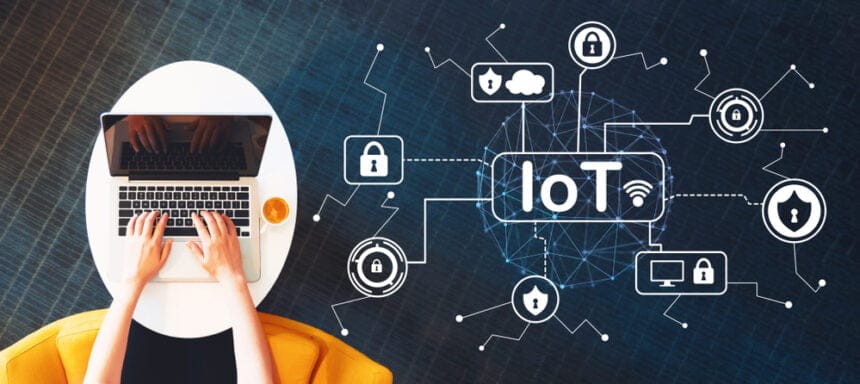IoT devices enable you to adjust your thermostat before you get back home. Or order groceries using your voice assistant.
And they’re everywhere — in your office, your home, and even hospitals.
We need them to make our lives more convenient, make transactions faster, and make the use of smart technology effortless.
To do all of this, IoT devices have to collect data about you and your surroundings.
But what do IoT devices know about you, exactly?
Here, we explore what type of data IoT devices gather about you and how you can improve IoT security to protect your important information.
Financial Information
Mobile wallets, payment bracelets, bank applications on your smartphone, contactless payment cards, and even smart fridges are only a couple of devices that rely on IoT technology to make transactions easy for users.
For example, smart fridges can be linked with other IoT components — such as the voice assistant Alexa. This makes it easy to order food, adjust the temperature of the fridge, or write shopping lists without getting up, opening the fridge, and checking what’s missing.
While you’re paying in-store with a contactless card, the terminal and the payment device (the card) have to exchange payment information. If a cybercriminal intercepts that communication, PINs and credit card numbers can end up in the wrong hands.
Your Location
A lot of IoT devices request and remember your location data — including fitness trackers, security systems, smartphones, health monitors, and even smart thermostats.
By continually tracking your whereabouts, they know more than just your home address. They can tell where you’re going every day and even map out your daily routine in great detail.
For example, data gathered from a thermostat can tell a threat actor when you leave your home every day and when you come back.
Wearable health monitors can tell them when your next medical appointment is.
If such data is collected and shared between IoT technology that lacks proper encryption and strict privacy settings but also isn’t continually updated to a safer version, stalkers and cybercriminals can exploit them to learn more about their victims.
Medical Data
Monitoring devices used in healthcare and fitness gadgets that help us track our goals are some of the IoT devices that collect sensitive data about users. Think sleep rings, smart watches, cardiac monitors, pacemakers, insulin pumps, and glucose monitors.
Fitness gadgets can let a bad actor in on your daily routine and movements — when you are at home and where your running route is. It can also reveal your sleep patterns or even possible health conditions.
Access to medical devices used by hospitals can grant access to sensitive information such as a patient’s health conditions and treatment — pulling them from electronic medical records.
In the worst-case scenario, the data the hacker gets can be used to gain illicit remote access to medical devices and tamper with insulin dosing or other medical equipment.
Also, don’t forget about the health apps on your phone that you use to log your water intake, exercise, menstrual cycle, or count calories. Unauthorized access to such apps can lead the cyber criminal straight to your most private and sensitive data.
Home Audio and Video
IoT devices have eyes and ears on your home.
If they’re hijacked, IP cameras, videos recorded by robot vacuum to map the cleaning area, baby monitors, voice assistants, and door cameras can all offer direct insight into your surroundings.
If security cameras or baby monitor cameras are hacked, the attacker can get access to both cameras’ live feed and older recorded home footage. They can see where people are within the house and how the property looks from the inside.
Voice-controlled assistants and doorbells can be used for eavesdropping on the house residents, listening in on conversations, and gathering sensitive information. They might even use baby monitors to communicate with children.
Both audio and video IoT devices can be used to further infiltrate the home network.
How to Improve IoT Security
“Hey Alexa, how can I protect my IoT devices from cyber-attacks?” To find the sweet spot between convenience and security of IoT devices, start here:
- Change the default passwords on smart devices in your home or office
- Update IoT devices to the latest versions released by the manufacturer
- Invest in IoT security that can continually monitor and detect anomalies and track signs of unauthorized access to your network
By 2025, the world will have over 30.9 billion IoT devices. We’re already surrounded by 18.9 billion IoT devices all over the globe.
Considering that a large portion of the data that such devices collect is sensitive and personal, it’s important to protect them against cyber exploits.

